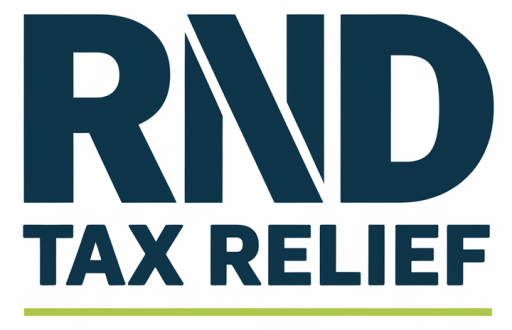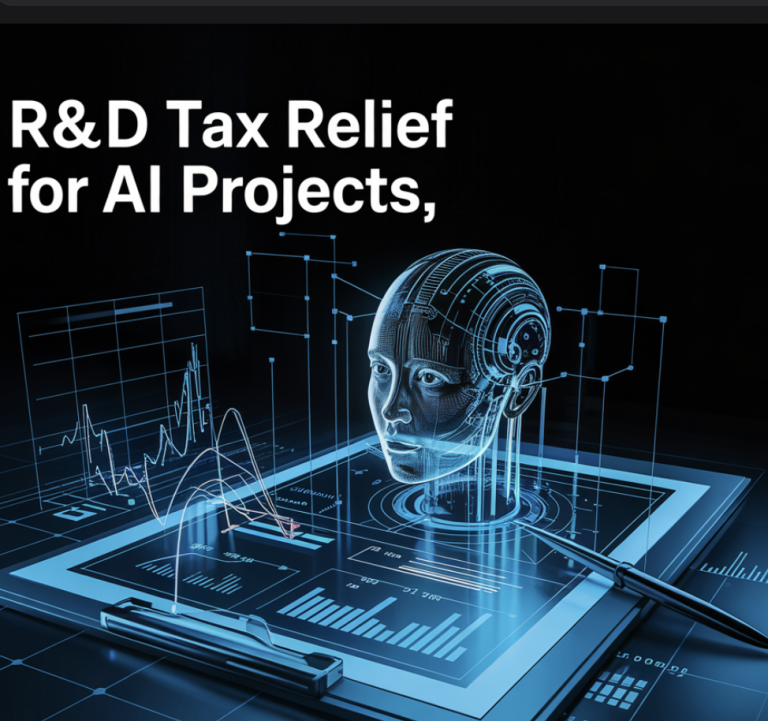R&D Tax Relief
R&D Tax Relief is a UK government backed initiative that incentivises innovation by granting businesses financial benefits for conducting research and development activities. It reduces tax liabilities, allowing firms to reinvest savings into further technological advancements. Eligibility spans various industries, requiring thorough documentation of expenditures related to R&D projects, such as staff wages and software costs. With different relief rates for SMEs and large companies, understanding specific criteria is essential, setting the stage for deeper insights into maximising these benefits.
What is R&D tax relief?
R&D tax relief, a government initiative designed to foster innovation and technological advancement within businesses, serves as a significant financial incentive for companies engaging in research and development activities.
By providing R&D benefits, it facilitates tax savings that can be pivotal in driving innovation funding. Eligible sectors such as manufacturing, IT, and professional services benefit from these financial advantages, promoting SME growth and industry impact.
The claim process, essential for accessing these benefits, involves adherence to compliance requirements and process optimisation to guarantee accuracy and effectiveness.
This initiative not only reduces the financial burden on businesses but also enhances their capacity for innovation, supporting their competitiveness and fostering broader economic development through technological advancements.
How do they work?
The mechanism of R&D tax relief operates as a fiscal incentive, structured to alleviate the tax burden on eligible companies by offsetting qualifying research and development expenditures against their Corporation Tax liabilities.
Through innovative strategies and R&D processes, businesses can harness tax incentives to access financial benefits and funding opportunities, thereby fostering technological advancements.
Claim procedures demand adherence to compliance requirements, ensuring that projects align with HMRC standards.
Industry comparisons reveal varying economic impacts, with sectors like manufacturing and technology often reaping substantial benefits.
The intricate balance of funding opportunities and economic impact underscores the importance of a methodical approach to claiming these incentives, ultimately enabling companies to enhance their innovation capabilities and maintain competitiveness in a rapidly evolving marketplace.
Is my business eligible for R&D tax relief?
Amidst the complexities of fiscal policies, determining whether a business is eligible for R&D tax relief requires a nuanced understanding of the criteria set forth by tax authorities.
Eligibility considerations encompass several factors, including the nature of R&D projects, their alignment with innovation investments, and the financial implications of potential tax relief benefits.
Understanding the claiming process is essential, as it involves specific documentation requirements and adherence to stringent guidelines.
Professional assistance can be invaluable in navigating these complexities, reducing common misconceptions, and ensuring compliance.
Qualifying industries typically include manufacturing, IT, and professional services.
To clarify eligibility, businesses should consider:
- The scope and objectives of their R&D projects.
- The documentation supporting their claims.
- The financial implications of tax relief.
- Potential professional assistance.
Who qualifies?
To assess which entities qualify for R&D tax relief, it is crucial to first understand the specific criteria that govern eligibility, a concept previously touched upon when examining the intricacies of fiscal policies impacting businesses.
R&D eligibility criteria encompass limited companies in the UK subject to Corporation Tax, engaging in activities aimed at technological advancements. Qualifying industries include manufacturing and IT, where innovation funding supports projects.
Detailed project documentation is critical for accurate tax credit calculations and claim submission. Financial benefits are contingent on compliance requirements, necessitating professional support to navigate complexities.
This guarantees businesses benefit from innovation funding, leveraging tax relief to foster growth and maintain competitiveness. Understanding these elements is essential for maximising the potential financial advantages of R&D tax relief.
Does your business qualify?
How can a business determine its eligibility for R&D tax relief? A thorough Eligibility Assessment is essential.
Companies should evaluate whether they engage in innovative projects that qualify for Tax Incentives, adhering to specific Compliance Requirements.
The Claim Process begins with examining R&D Documentation to validate the innovation efforts. Expert Consultation can provide guidance on the following key aspects:
- Project Descriptions: Clearly define projects contributing to scientific or technological advancements.
- Industry Applications: Determine how the project applies within the relevant industry.
- Financial Benefits: Assess potential tax savings and Innovation Funding opportunities.
- Compliance Requirements: Ensure a thorough understanding and adherence to HMRC guidelines.
What qualifies as R&D?
When considering what qualifies as Research and Development (R&D), it is essential to understand that the activities must primarily aim to advance scientific or technological knowledge, addressing uncertainties that are not easily resolved by competent professionals in the field.
R&D definitions emphasise tackling technological challenges within defined project boundaries, often requiring innovation examples to illustrate qualifying sectors like manufacturing and IT.
Scientific advancements are pursued through structured development processes, where staff involvement plays a significant role. Expenditure tracking is critical for claim documentation, ensuring that all costs are associated with the intended advancements.
The activities should not merely seek to apply existing knowledge, but rather to extend understanding in areas that lack precise solutions, thereby contributing to the collective knowledge of the industry.
What costs qualify for R&D tax relief?
Determining which costs qualify for R&D tax relief requires a detailed understanding of the financial elements that support advancing scientific or technological knowledge, as previously highlighted within the context of defining R&D activities.
Qualifying expenses must directly relate to research activities and development costs. These include crucial components such as staff salaries, which cover employees directly involved in the project.
Additionally, software licences necessary for the R&D process, and subcontractor fees paid for external expertise, play a significant role in project advancement.
Materials used during experimentation and clinical trials are also considered, alongside extensive project documentation, which is essential for tax compliance.
Key qualifying costs include:
- Staff salaries
- Software licences
- Subcontractor fees
- Materials used in trials
Eligible projects
What makes a project eligible for R&D tax relief is the focus on advancing scientific or technological frontiers, where the endeavour seeks to resolve uncertainties not readily apparent or known within the field.
Innovation projects that address technological uncertainties through rigorous R&D methodologies are essential. They must demonstrate scientific advancements and development activities within eligible industries.
Project boundaries should be well-defined to guarantee compliance with funding opportunities and tax relief claims. Qualifying technologies often involve industries like manufacturing and IT, where projects aim to push technological limits.
Compliance requirements necessitate precise documentation of these efforts, emphasising the resolution of complex challenges.
These structured endeavours provide a solid foundation for significant tax incentives, fostering continued innovation and competitive growth.
What R&D incentive is right for my business?
Selecting the appropriate R&D incentive for a business can be a pivotal decision that markedly impacts its financial trajectory, especially for those engaged in innovation-driven industries.
An informed choice requires a thorough overview of Innovation incentives, considering diverse R&D funding options. It is essential to evaluate project eligibility criteria to determine the best fit, ensuring alignment with financial support programmes and SME tax benefits.
Understanding the impact of technological advancements on industry-specific advantages is important, as it allows businesses to harness potential gains.
Accurate expenditure tracking methods aid in effective claim preparation tips, mitigating common tax relief myths.
Businesses should consider the following:
- Industry-specific advantages
- Project eligibility criteria
- Expenditure tracking methods
- Claim preparation tips
R&D tax relief rates
While traversing the landscape of R&D tax relief rates, companies must understand the differentiation in benefits based on their size and fiscal positioning, as these rates considerably influence the financial returns from R&D investments.
R&D tax rates offer diverse financial impacts; SMEs, for instance, benefit from higher percentages of relief compared to large companies, catalysing innovation funding through generous tax credit benefits.
Large company incentives also exist, yet at reduced rates, focusing on significant qualifying expenditures.
The claim process demands attention to project eligibility and accurate documentation, often with industry examples illustrating best practices.
Understanding these rates is essential, as they dictate the extent of financial relief received, ultimately impacting a company’s capacity to reinvest in innovative projects and maintain competitive market presence.
How much is R&D tax relief worth?
How significant are the financial benefits of R&D tax relief for companies? R&D tax relief provides substantial benefits, acting as a catalyst for R&D funding, and integrating seamlessly into innovation strategies.
Tax credit benefits are particularly compelling, offering financial planning advantages and fostering business growth. Companies can enhance cash flow through the claim process, which requires thorough eligibility assessment and precise documentation tips.
Professional support is often recommended to navigate these complexities.
Industry examples illustrate varied benefits:
- Enhanced Cash Flow: Companies often reinvest tax relief to fund further R&D efforts.
- Competitive Edge: Tax relief allows firms to implement advanced innovation strategies.
- Growth Opportunities: Supports scaling operations and entering new markets.
- Risk Mitigation: Professional support guarantees compliance and maximises claim potential.
Request a callback
When manoeuvring the intricacies of R&D tax relief claims, many companies recognise the value of professional support, which often begins with a simple request for a call back. This initial consultation request serves as a gateway to expert assistance, offering claim guidance and process explanation. Through a call back, firms can receive an eligibility assessment, project evaluation, and insights into tax relief benefits, all essential for informed financial planning and an effective innovation strategy.
| Consultation Request | Expert Assistance | Financial Planning |
|---|---|---|
| Call Back | Claim Guidance | Tax Relief Benefits |
| Process Explanation | Eligibility Assessment | Innovation Strategy |
| Project Evaluation |
Engaging with experts guarantees a thorough understanding of the R&D claim process, helping organisations optimise their strategies for maximum benefit.
Frequently Asked Questions
How Has R&D Tax Relief Evolved Since Its Introduction?
The evolution timeline reflects policy changes increasing funding and expanding eligibility criteria. Claimant demographics diversified, with government incentives enhancing competitiveness. Impact analysis shows positive growth, while international comparisons highlight effectiveness. Future predictions suggest further refinements and expansion.
Which Industries Benefit Most From R&D Tax Relief?
Industries benefiting most from manufacturing innovations, technological advancements, pharmaceutical breakthroughs, agricultural research, software development, engineering projects, construction techniques, food production, renewable energy, and aerospace designs consistently leverage incentives to support growth, enhance competitiveness, and drive scientific progress.
How Do Recent Changes Affect R&D Tax Relief Claims?
Recent updates affect the claims process by altering eligibility criteria, financial implications, and industry impact. Stricter compliance requirements and potential claims audits challenge businesses, while government incentives offer funding opportunities, shaping the future outlook of innovation-driven ventures.
What Documentation Is Needed for an R&D Tax Relief Claim?
The Current Question requires claimants to provide thorough documentation types, including project descriptions, financial records, and innovation reports. Supporting evidence of eligible costs and time allocation guarantees compliance during the submission process, enhancing claim requirements and expense tracking accuracy.
How Can Professional Support Optimise R&D Tax Claims?
Professional consultants enhance claim preparation through tax compliance, financial analysis, and project eligibility assessment. They offer expert guidance on innovation strategy, risk assessment, and audit readiness, utilising industry benchmarks to optimise claims and guarantee maximum benefits.
Conclusion
R&D tax relief serves as a critical financial mechanism that incentivises innovation by offering significant reductions in Corporation Tax liabilities or providing payable tax credits, thereby encouraging companies across various sectors to invest in research and development. The intricate process of claiming this relief necessitates precise documentation and adherence to HMRC regulations, which can be efficiently managed through specialised professional assistance. Ultimately, this initiative not only enhances corporate innovation but also drives economic growth and technological advancement.





